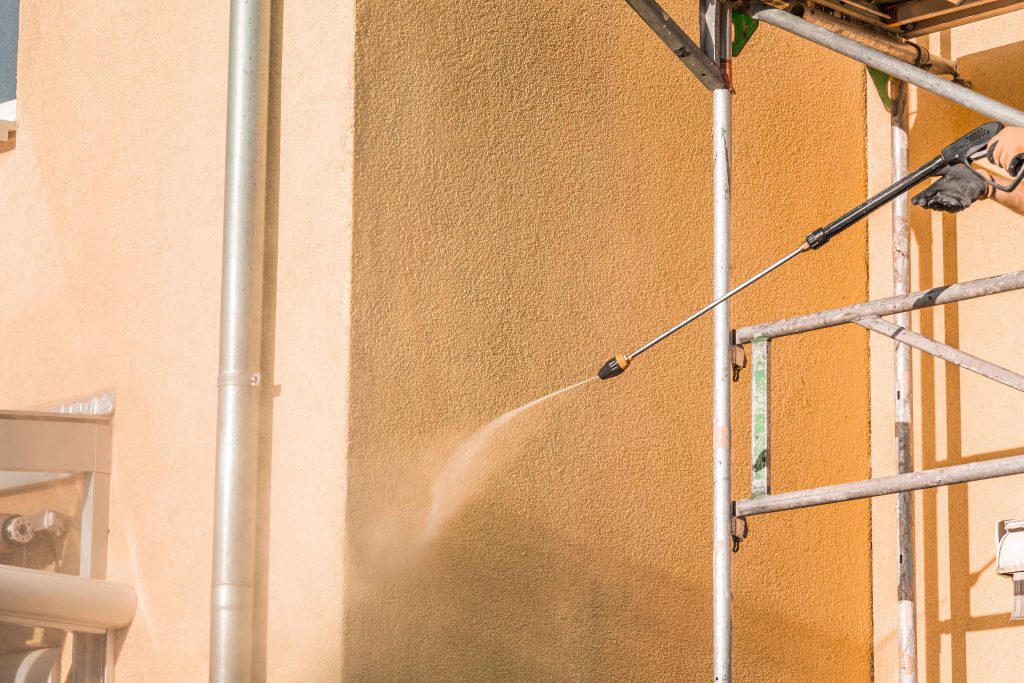Every homeowner, at some point, realizes that their facade could use a little sprucing up. Whether the paint has lost its vibrancy or there are visible signs of wear and tear, it’s essential to address these issues promptly. Before diving into extensive renovations, follow this step-by-step guide to breathe new life into your home’s exterior.

1. Start with cleaning
Before embarking on any significant project, it’s crucial to assess the extent of the work required. Experts recommend cleaning your facade every decade. During this process, if you notice minor cracks or damages, it might be time to consider some repairs or renovations. To ensure a thorough cleaning without causing further damage, consider hiring professionals.
2. Assess the damage
Do you spot moss or cracks on your facade? The treatment for each differs. Moss typically indicates underlying moisture issues. If the paint is chipping, it might be time for a fresh coat. However, if there are cracks, they could hint at more severe problems, like potential water infiltration. Depending on the crack’s size, you might need professional intervention. If the crack is manageable, you can address it yourself without incurring high costs. In some cases, re-pointing the walls might be necessary to prevent severe water infiltration issues.
3. Take action
After diagnosing the issues, it’s time to formulate a plan. It’s always wise to anticipate future problems. Consider investing in anti-moss treatments, water repellents, or other protective coatings to prolong your paint’s lifespan and reduce future expenses. Alternatively, you might decide to opt for cladding. Not only is it aesthetically pleasing, but it can also enhance your home’s energy and thermal performance. If you choose this route, don’t skimp on insulation!
4. The finishing touches
Paint is the final touch, allowing homeowners to personalize their space. It’s a crucial step, so choose wisely. There are various paint types, each with its benefits. Always opt for paint that offers moisture protection, your facade’s primary adversary.
Special considerations for brick facades:
1. Sandblasting
Sandblasting involves blasting fine material at high pressure onto your facade. It’s an effective method but can cause damage, especially if the facade is porous or the mortar is deteriorating.
2. Dry or steam cleaning
If your facade isn’t heavily soiled, consider dry or steam cleaning. Dry cleaning involves applying a product directly to the dirt and rinsing with water. Steam cleaning is suitable for removing moss and superficial dirt. Ensure your facade is in good condition before opting for this method.
3. Hydrophobic treatment
A hydrophobic treatment prevents excessive moisture in your walls and reduces wall soiling.
4. What about the mortar?
Intensive cleaning can wear out the mortar. Re-pointing can transform your facade’s appearance. Choose a mortar color that complements your bricks, keeping in mind that lighter shades tend to draw more attention.
Conclusion: A well-maintained facade not only enhances your home’s curb appeal but also protects it from external elements. By following this guide, homeowners can ensure their property remains both functional and aesthetically pleasing for years to come.

 Open Immovlan
Open Immovlan